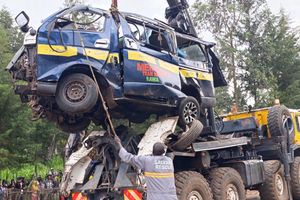
The benefits of automation can cause huge returns which help repay the deployments costs.
Automation of government services is the right thing to do. It makes government processes objective and more transparent. It stores important data in a better way which then helps policy makers draft more rational and objective plans. Manual record keeping is scattered but digital records are collated. Citizens get an opportunity to access government services more conveniently.
But there are problems that automation can bring. This article attempts to give a critical look on automation negatives and positives of county services drawing from experiences so far in Murang’a County.
Murang’a County Government has automated various services including revenue collection. This includes parking, market, cess and other related revenues streams. Hospital records have also been automated including processes in it's 164 medical facilities including those in the rural areas.
Building permits are obtained via online applications. Human resources management (application for promotion, leaves, transfers) is now done online. Management of county fleets is also automated.
However, there have been downsides or problems. The first is the cost. The cost includes the huge amounts of resources needed to deploy automation, particularly the hardware. The county has largely escaped the cost for software development by employing in-house software engineers but hardware has no escape. This includes computers, Internet systems and networking devices. There is also the maintenance cost. Computers have to be repaired. The Internet has to be paid for.
The cure for this begins with a cost-benefit analysis of automation. The benefits of automation can cause huge returns which help repay the deployments costs. For instance, prior to automation, the county annual own source revenue was averaging at Sh500 million. After automation, the county crossed the Sh1 billion mark which helps offset maintenance and deployment costs.
Internet costs have also dropped marginally after the recent Internet provision competition.
The second problem is Internet downtime. This refers to periods when service is unavailable due to maintenance, outages and other technical issues. This leads to client dissatisfaction and losses of county revenues. The worst of these downtimes are in hospital systems.
The remedy to this includes the deployment of redundancy mechanisms which often can be expensive. Some of these systems are collaborative works. For example, the hospital system is hosted by the national government's Ministry of Health for a good cause - the need to adhere to national medical standards.
Healthcare is such an important endeavour that there can never be a Murang'a County stand-alone standard. This means, however, that when systems shut at MOH Afya House, Murang'a systems halt. The ministry, on the positive side, is reporting its intention to move its servers to the cloud to cut downtime.
Having multiple network connections and configuration of fail over mechanisms is also a good hedge against downtimes particularly for key Internet installations like healthcare systems.
Cyber security is another possible bottleneck. Thieves who physically break into people's homes armed with machetes are a throwback to a bygone era. Counties with automated systems must watch out for smart, tech-savvy crooks who hack systems from the comfort of their houses. This calls for robust cyber security systems. These include conducting penetration tests and ethical hacking. Data storage and offline systems help circumvent this. Murang'a is currently researching how to use Blockchain technology as an advanced mechanism that would help store records in an immutable way.
Change management is also another challenge in the county automation journey. This includes public and staff management challenges. On the public side, one is gladly surprised that the public is the most enthusiastic embracing stakeholders of technology. It appears that even in instances where technology might cause a struggle amongst a few members of the public in understanding new technology, the great majority are mollified to trust their money is now not getting lost. Murang’a County Milk and Mango subsidy is fully digitised, notwithstanding these sectors being fully domiciled in the rural areas.
On the staff side, continuous education and training are important. Young employees are highly enthusiastic about advancing technology. It gives them important tech skills that they can deploy elsewhere if they desire to shift employment. But Murang’a has also encountered criticism for some innovations that were deemed as being too invasive and breaching privacy. A county software engineer innovated a mobile based employee clock in the system. We now only use it for those who might want to claim overtime or nudge good behaviour for suspected truancy cases.
What is the future of automation of county services?
How artificial intelligence fits into these innovations is something to ponder. Citizenry engagement and complaint/ feedback mechanisms can now adopt artificial intelligence being repeat tasks.
But for rural counties, that might require language specific systems - Kikuyu language models for Murang’a, for example. That calls for innovations for AI virtual assistants. But AI can help collate large datasets and predict scenarios. It can even triage healthcare cases.
Drone technology is another important milestone. Drones can be deployed for healthcare commodity distribution (pharmaceutical and non-pharmaceutical deliveries); revenue supervision and developmental control. However; drones are expensive and highly regulated. Lighter regulations by the national government would help scalability of this technology.
However, the public sector might not have all these solutions. Public-Private Partnerships can help fill these gaps.
Dr Irungu Kangata is the Governor for Muranga County email Franciskangataik@gmail.com










